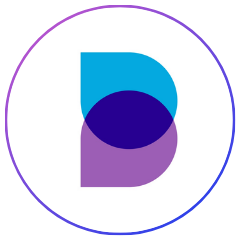If you’re wondering, “What is a credit score, anyway?” – don’t worry! We’ve got you covered.
The Borrowell Team
Jul 04, 2025
Learn More
Feb 28, 2023 • 6 min read
With all the different credit options available in Canada, it’s important to understand the differences between each one so that you can find the right product for your needs.
Credit is the ability to borrow money with the understanding that you'll pay it back to the lender later. Common credit products include credit cards, personal loans, mortgages and lines of credit. Each can be used to help you establish your credit history and, if used responsibly, can contribute to building a strong credit score.
In this Borrowing 101 article, we’ll give you an overview of personal loans and lines of credit to help you understand how they work, when to use them, and what to be careful of in order to protect your credit score.
Personal loans are a fixed amount of money that you borrow and pay back with interest in monthly instalments over a predetermined time period. Interest is charged on the full amount of the loan as soon as you take it out, regardless of when you end up using the money. Once your loan is paid off in full, your account is closed. If you needed to access more money, you’d have to apply for another loan.
Personal loans can be secured or unsecured. Secured loans are backed by collateral, meaning something you own, like a car or your house. If you’re unable to make the payment amount on your loan, the lender typically has the right to claim that asset. Unsecured loans aren’t backed by collateral.
Lenders will decide whether you qualify for a personal loan, the amount and the interest rate based on a variety of factors including your assets, income and your financial history including your credit score. Thus, checking your credit score before you apply will let you know if you need to take steps to improve it in order to access a better range of offers.
Loans can have a fixed interest rate, where the interest rate is agreed on at the start of the term and remains the same throughout, or a variable interest rate, where the interest rate changes depending on wider market conditions and the lender’s prime rate. Loan terms vary, most commonly between 6 and 60 months.
Personal loans can be used to consolidate debt, pay off a credit card, finance a major purchase such as a car or home improvement project, or finance a small business. If you want to apply for a personal loan it is helpful to know exactly how much money you need, what you need it for, and if you’ll be able to meet the monthly repayments.
Personal loans can be a useful way to consolidate high-interest consumer debt such as credit card debt. By consolidating your debt you’ll only have one monthly payment with a lower interest rate, which could help you save money and pay back your debt sooner.
With a personal loan, you get a lump sum of money and start paying interest immediately, regardless of when you spend the money. Unsecured personal loans can have higher interest rates than secured loans. There can be prepayment penalties for paying your loan off in full before your loan term is up so be sure to carefully review the terms.
As with any type of credit, it’s important to think about why you need the money and ensure you have space in your budget to make your payments on time.
A line of credit lets you access up to a fixed amount of money, called your credit limit. You can access the funds as you need and interest isn’t charged until you actually borrow money; you’ll only be charged monthly minimum payments during the months when you’ve borrowed. You can pay back as little as the minimum payment or as much as you want. There are no penalties for paying off the balance in full.
A line of credit is considered revolving, meaning that once you pay back the money you have access to that amount of credit again. Let’s say that your bank gives you a line of credit with a limit of $10,000. If you take out $2,000 one month and pay back $2,000 the following month, you once again have access to $10,000. Similar to a credit card, a line of credit gives you access to money “on-demand”. You apply once and use available credit when you need it.
Personal lines of credit are typically unsecured, meaning you don’t need to use collateral, such as a house or car, to get them. Most have variable interest rates and the terms are often more flexible than a personal loan.
While lines of credit tend to be unsecured, it is possible to secure a line of credit with your house, and this is known as a home equity line of credit (HELOC). The advantage of taking out a HELOC over a regular, unsecured line of credit is that the interest rates will often be a lot lower, because your house acts as security.
A line of credit can be used to consolidate debt and finance home projects, education costs, or other ongoing major expenses. It can also be useful for a big project, like a home renovation, where costs are difficult to estimate and can shift over time. A line of credit can give you more buffer and flexibility than a personal loan would because you can continue to use the loan over and over, as long as you pay back the money.
Just like a personal loan, a line of credit can be a good way to consolidate high-interest consumer debts into one payment with a lower interest rate.
Because a line of credit is more flexible than a personal loan, you have to be extremely diligent about how you use it. Just because you have access to the money doesn’t mean you should take advantage of it. Like with a credit card, it could be tempting to only make the minimum payments, but that will cost you more in interest over the long run.
If you’re looking at a line of credit as a way to avoid defaulting on another loan, it’s best to address what’s causing that existing financial strain: make a budget, and put a plan in place to pay back your debt while re-establishing good credit in the eyes of the credit bureaus.
You’ll also want to be mindful of the terms of the loan, how the variable rate is changing over time, and any fees it may have, such as an annual fee.
While both loans and lines of credit allow users to borrow money, they’re quite different in practice. Let’s take a look at the key differences:
| Personal Loan | Line of Credit |
|---|---|
| You get access to the amount loaned only once as one lump sum. | A line of credit is a preset borrowing limit that you can use at any time, pay back, then borrow again. |
| Personal Loan: You get access to the amount loaned only once as one lump sum. | Line of Credit A line of credit is a preset borrowing limit that you can use at any time, pay back, then borrow again. |
| A loan is based on your need, such as to buy a car, pay for tuition fees, or consolidate debt. | Lines of credit can be used for any purpose, depending on your need at the time. |
| Personal Loan: A loan is based on your need, such as to buy a car, pay for tuition fees, or consolidate debt. | Line of Credit Lines of credit can be used for any purpose, depending on your need at the time. |
| Loans tend to have higher closing costs than lines of credit. | Credit lines generally have higher interest rates than loans. |
| Personal Loan: Loans tend to have higher closing costs than lines of credit. | Line of Credit Credit lines generally have higher interest rates than loans. |
| Appears on your credit report as an instalment trade line. | Appears on your credit report as a revolving trade line. |
| Personal Loan: Appears on your credit report as an instalment trade line. | Line of Credit Appears on your credit report as a revolving trade line. |
| Interest accrues on the full loan amount right away. | Interest accrues only when funds are used. |
| Personal Loan: Interest accrues on the full loan amount right away. | Line of Credit Interest accrues only when funds are used. |
Before applying for any type of personal loan or line of credit, check your Equifax Canada credit report for free with Borrowell to see if there is anything you can do to improve your financial health. Increasing your score can mean more attractive interest rates and offers on things like credit cards, loans, mortgages and lines of credit.
Used wisely, credit can be a wonderful tool to help you achieve your lifestyle and financial goals, but make sure you always have a plan in place for how you’ll use the money and how you’ll pay it back.
Trusted by over 3 million Canadians, Borrowell provides free weekly credit scores and report monitoring, personalized financial product recommendations and affordable tools to help you build your credit. Sign up for your free Borrowell account today on borrowell.com, or download the mobile app for Android or iOS.
If you’re wondering, “What is a credit score, anyway?” – don’t worry! We’ve got you covered.
The Borrowell Team
Jul 04, 2025
Learn More
Find out what credit score you need for a line of credit in Canada.
Sandra MacGregor
Jul 03, 2025
Read More
If you manage your line of credit wisely, it can increase your score.
Sandra MacGregor
Mar 25, 2025
Read More




